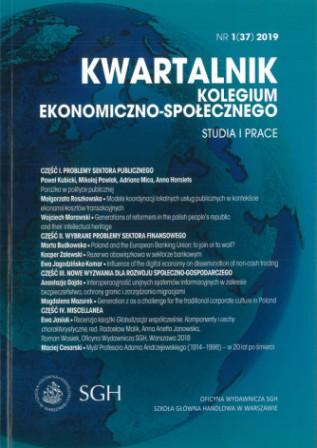Rezerwa obowiązkowa w sektorze bankowym
The fractional reserve banking system
Author(s): Kacper ZalewskiSubject(s): Economic history, Financial Markets, Public Finances
Published by: Szkoła Główna Handlowa w Warszawie
Keywords: banking; full-reserve banking; fractional-reserve banking;
Summary/Abstract: At the beginning of the 17th century the first public bank was established in Amsterdam. Its primary aim was to ensure high quality of the currency in circulation. Additionally, it provided a vault service to the citizens and organizations, e.g. trading companies. During first years a great attention was put on the security of the deposits, yet within next periods the bank started providing external financing, which accompanied with poor economic conditions led to the insolvency of the bank in the 19th century. The example presents two banking systems – full and fractional reserve. The full reserve requires from a bank keeping all deposits all the time, while the fractional reserve requires keeping a safe level of deposits to ensure smooth operating of the business. At the same time, a monetary system developed, form the full gold standard to the issuer guarantee only. These two subjects have a lot in common and should not be analysed separately, which is done during public debate nowadays, and should be both considered while thinking about money supply and economic disturbances. Any law changes in the mandatory reserve area should be considered with respect to the monetary policy and other banking system aspects.
Journal: Kwartalnik Kolegium Ekonomiczno-Społecznego „Studia i Prace”
- Issue Year: 37/2019
- Issue No: 1
- Page Range: 111-123
- Page Count: 13
- Language: Polish

